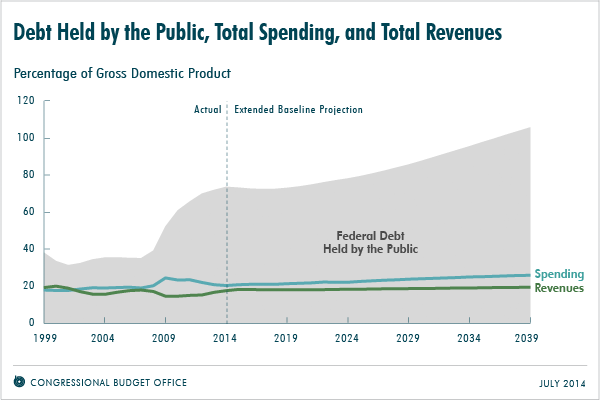The CBO says:
Federal revenue collections is expected to increase over the same timeframe, from 17.6 percent of GDP in 2014 to 19.4 percent of GDP in 2039.They have no basis in fact to say this except that is the number needed to support current government programs. There problem is this graph:
This is a graph of revenue from the federal reserve.
This is money collected from taxpayers, then returned right back to government because the Fed has bought 3 trillion in government bonds. So this is really money printed. The amount of money printed is equal to the amount that taxpayers refuse to pay. The multiplier on this printed money needs to be 1.5, 1.5 dollars of GDP activity for each dollar printed, if government is not a drain on the economy. But government multipliers are near .01, as we can see from the effect of Obamacare on the economy. This means government is subtracting about 1/3 of a point from GDP, and compounded, that means about 2% every five years, that is a recession when growth is 2%. Each recession the money printed goes up another 25%, and government bankrupts the economy very quickly, say ten years and we are goners.
California is a secessionist state
California is the problem, just like the Civil War. The Republican House will not be subservient to a Jim Crow secessionist state, and Obama is scared to death of John Perez and Nancy Pelosi. So Congress is a defunct body for three years. DC has no way to reconcile spending and revenue. Janet will be back to the printing press and we get a series of short recessions, every few years.


No comments:
Post a Comment